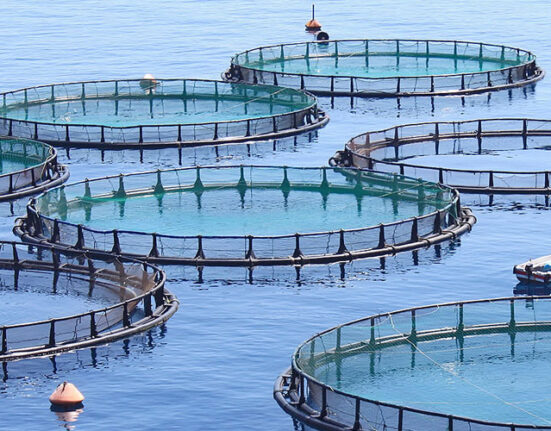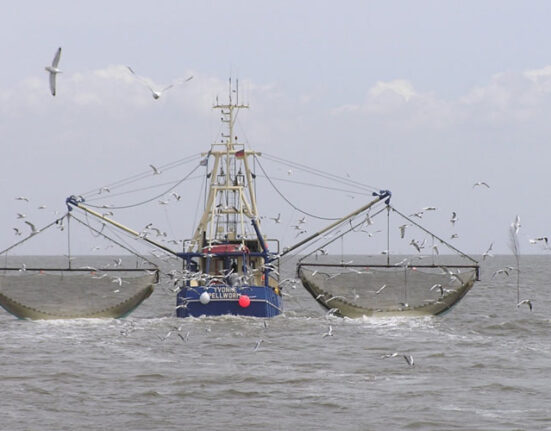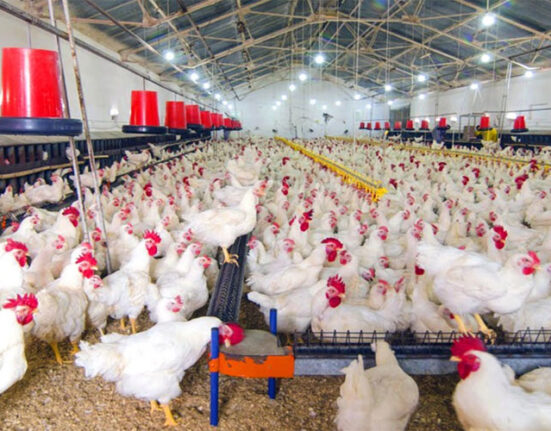Abstract
Minerals stabilize organic carbon (OC) in sediments, thereby directly affecting global climate at multiple scales, but how they do it is far from understood. Here we show that manganese oxide (Mn oxide) in a water treatment works filter bed traps dissolved OC as coatings build up in layers around clean sand grains at 3%w/wC. Using spectroscopic and thermogravimetric methods, we identify two main OC fractions. One is thermally refractory (>550 °C) and the other is thermally more labile (<550 °C). We postulate that the thermal stability of the trapped OC is due to carboxylate groups within it bonding to Mn oxide surfaces coupled with physical entrapment within the layers. We identify a significant difference in the nature of the surface-bound OC and bulk OC . We speculate that polymerization reactions may be occurring at depth within the layers. We also propose that these processes must be considered in future studies of OC in natural systems.
Introduction
Recent estimates suggest that after rocks (70 million Gt of organic carbon), soils (2,500 Gt) and marine sediments (3,000 Gt) account for the largest reservoirs of organic carbon on Earth1,2. It is thought that all of this carbon is intimately mixed with minerals2. Many researchers have studied the nature of mineral-stabilized organic carbon in soils3 and marine sediments4, but the majority of these studies are the equivalent of ‘biogeochemical black boxes’ where inputs and outputs can be estimated but the internal mechanisms operating in these natural systems are rarely clear due to their inherent complexity. We therefore need to look at simpler, more controlled systems to extract the fundamental mechanistics of mineral–carbon interactions.
Manganese is known to strongly interact with dissolved organic carbon (DOC)5,6,7. Its global role in the stabilization of carbon in sediments, however, is almost entirely unconstrained. Roy et al.8 recently described the close association between both reactive iron (Fe) and reactive manganese (Mn) with organic carbon (OC) in the marine sediments off the Californian and Oregon coast in the United States. They8 found that there was a stronger correlation between Fe and OC compared with Mn and OC and postulated that this was because reactive Mn was more mobile during diagenesis. Lalonde et al.4 more recently confirmed that Fe-associated OC (Fe-OC) accounts for up to 21% of marine sediment OC, emphasizing the importance of mineral–organic interactions as critical components of the global carbon cycle. However, neither of these studies is able to comment in detail on the specific mechanisms behind the OC stabilization by these redox active metal oxides. This is due to the inherent heterogeneity of natural systems, in terms of microbiology, fluctuating environmental conditions and the mixed mineral assemblages they represent.
To further add to the complexity of studying mineral–OC interactions in natural systems, most OC in sediments is molecularly uncharacterized carbon (MUC)9.
Traditionally, OC in sediments has been analysed using acids/alkalis or solvents for extraction and then chromatography for characterization, but these methods are flawed due to the changes induced in the organic carbon during extraction10. Thermal gravimetric analysis has been shown to differentiate between pools of organic carbon, broadly defined as ‘thermally labile’ (released at temperatures <550 °C) and ‘thermally refractory’11,12,13 (released at temperatures >550 °C). However, both solvent extraction and thermal analysis can suffer from analytical artefacts requiring other, independent analyses. We use X-Ray photoelectron spectroscopy to study the OC bonding environment without either solvent or thermal extraction. Thermally refractory OC in soils is traditionally thought to be composed of black carbon11, but it is only an end member in a continuum of thermally refractory OC, as humin is also thermally stable14. Black carbon is formed by the incomplete combustion13 of organic carbon. Humin (or ‘protokerogen’) is thought to be organic carbon that is strongly bound to mineral surfaces14. Current theories on how OC becomes partitioned into the thermally refractory humin fraction include selective preservation of refractory molecules, physical protection of OC by mineral occlusion (entrapment of OC within the mineral matrix) and geopolymerization15,16,17.
Geopolymerization describes the oxidative polymerization of low molecular weight monomers to humic substances that can be catalysed by mineral surfaces17. Birnessite is one of the most common Mn oxides in terrestrial (for example, in soils18 and natural aquatic systems19) and marine environments (for example in oceanic ferromanganese nodules20,21 and in pelagic sediments21,22). Birnessite also catalyses the polyphenol-Maillard reaction23, which generates humic polymers. In contrast, Mn oxides can break down high molecular weight (HMW) humic substances into lower molecular weight (LMW) organic molecules6. Whether Mn oxides humify organic molecules into larger HMW molecules or break them down them into smaller LMW molecules is not fully understood but is likely to depend on the balance between oxidants (including oxygen and Fe/Mn oxides) and reductants (such as DOC) in the system24. Our study addresses a major gap in understanding about the mechanism of how OC and sediments interact at a molecular and individual mineral scale, invoking both of these aforementioned reaction pathways in the same micro-environment.
In contrast to the ‘black box’ approach of studying natural systems, we decided to present experimental data from a more controlled non-natural system. Our data are from a clean water treatment works (WTW) where the main inputs and outputs of Mn and DOC are well constrained. The WTW filter bed consists of birnessite-coated sands (confirmed with extended X-ray absorption fine structure (EXAFS) spectroscopy, data not shown), which represent a far simpler and relatively homogenous mineralogy compared with natural marine sediments or terrestrial soils. Studying this simplified system has significant advantages over natural samples, as we are able to look at the specific chemical mechanisms involved in OC stabilization in concentrated mineral assemblages, largely without biotic interference (see below). This approach enables us to show that the birnessite, one of the most common forms of Mn oxide in marine20,21,22 and terrestrial environments18,19, builds up in ‘onion shell’ like layers in WTWs, trapping DOC at 3%w/w C (0.5%w/w inorganic carbon is also present). We call the trapped organic carbon ‘manganese associated organic carbon’ (Mn-OC). We use a novel combination of micro-Fourier transform infrared spectroscopy (FTIR), fluorescence spectroscopy, thermogravimetric analysis (TGA) and X-ray photoelectron spectroscopy (XPS) to analyse this Mn-OC and identify differences between Mn-OC bound at the surface of the Mn oxide coatings (that is, the outermost layer of Mn oxide) and Mn-OC present in the bulk Mn oxide coatings.
Results
Sampling
The birnessite-coated sand is from a clean water treatment works (WTW) gravity filter bed designed to remove soluble Mn (∼0.2 mg l−1) from the influent water (see Methods for further details). The influent water contains natural DOC ∼10 mg l−1 with a δ13C signature of ∼−27‰ ref. 25 and a small amount of a cationic flocculant (see Methods for further details). The pH is raised to pH 9.2 by flash liming to optimize abiotic manganese removal via precipitation of birnessite as coatings on the sand grains and as Mn oxide particulates in between the grains. Basal respiration is not detectable. It should be noted that not all influent Mn (or DOC) is removed. The filter bed is backwashed on a daily basis to remove particulate Mn oxide to ensure that porosity is retained. The Mn that stays in the filter bed builds up as birnessite coatings (∼100 μm thick) on sand grains (see Fig. 1). We refer to ‘surface bound Mn-OC’ as the organic carbon present on the outermost surface of the intact birnessite coatings, while ‘bulk Mn-OC’ refers to the organic carbon present throughout the bulk of the birnessite coatings (where bulk material was generated by carefully dislodging the birnessite coatings from the sand grains and sieving to produce the 63-149 μm fraction).
Read Full Article https://www.nature.com/articles/ncomms8628












Leave feedback about this